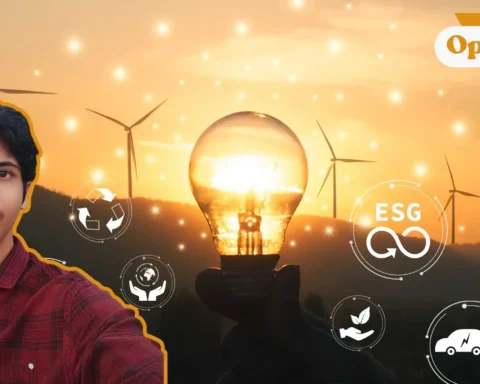When the internet first became publicly available in the early 1990s, we as a people bought the idea that it would bring us closer together. This widely held belief was further propelled by explicit efforts at globalisation. Nearly four decades later, however, many people would, in varying degrees, disagree with that sentiment. This is despite a hyper-fast internet connection allowing communication with people who exist 12 time zones away. So what happened? How did we as a society go from “the world at your fingertips” to a “loneliness epidemic”?
In the mid-2000s, a few college students enrolled in Harvard created an online platform that would inspire the script of a Hollywood budget featuring Jesse Eisenberg, Justin Timberlake, and Andrew Garfield and also change the world as we know it. Facebook, founded in a campus dorm before transforming into a trillion-dollar company that has affected elections and recodified how the human brain functions, sits at the epicenter of all that is the modern-day internet.
For those too young to remember, when Facebook was in practice the only social media everyone used, there was no for you page or algorithm-based content. Content on one’s page was a chronological order of what your friends had shared, likes, views, and comments, though existing did not impact how one interacted with the platform. Instagram functioned in a similar style even as it was acquired by Facebook in the early 2010s. In many ways, social media tended to be a more organic, deliberate experience. Strangers’ posts would not appear on your feed unless you went looking for them.
However, in 2011, Facebook made a change to its modus operandi, which was seemingly another software update at the time but in fact a retcon of how we interact with the world as a whole.

The ‘For You’ Page and Gender Wars
TikTok, Instagram, Facebook, Twitter, and most other social media platforms all have a ‘For You’ page where the algorithm recommends what, according to its programming, is what you would like to see but haven’t followed or subscribed to. At least this is how it should work. In reality, the ‘For You’ page serves to ensure that one stays online longer, and for that, recommended content has to be very engaging for the user, and thus, the problem arises as platforms will go to any lengths to ensure their content keeps you online.
Social media platforms will intentionally use content that they know to be divisive to mine people’s attention. In practice, this does not amount to simply heated debate but content that they know will draw a strong emotional reaction. In 2021, a Meta internal memo was leaked in which it explicitly stated, “Our algorithms exploit the human brain’s attraction to divisiveness.”
This has not been without cultural impact. Much of online discourse has fallen into conversations about the manosphere and red-pill content. Both of which have had a tremendous negative impact on young boys and men’s perception of females by cultivating misogynistic tendencies, and social media companies know this. In essence, the gender wars have become chess pieces that companies can use to generate profit.
The gender wars refer to a modern cultural conflict between men and women over issues like dating, identity, rights, and societal roles. While not a literal war, it plays out through heated debates online, especially on social media platforms that reward emotionally charged content. At the core of these conflicts are long-standing tensions around feminism, masculinity, and evolving expectations often amplified by personal frustration and algorithmic reinforcement.
On one side, feminists argue for equality in pay, representation, and bodily autonomy, while criticizing the burden of domestic labor and emotional caretaking disproportionately placed on women. On the other side, anti-feminist and “Red Pill” voices claim that modern feminism has gone too far, leaving men disempowered in relationships, education, and family structures. These groups often argue that women are driven by hypergamy (the pursuit of high-status men) and accuse modern dating culture of devaluing male commitment. In return, they are criticized for promoting misogyny and toxic masculinity.
These tensions are made worse by social media algorithms that prioritize engagement over well-being. Outrage, hot takes, and polarizing narratives spread faster than thoughtful dialogue. Platforms like TikTok and YouTube often push content that pits the genders against each other, encouraging generalizations like “men are trash” or “modern women don’t want to be wives anymore.” While some of these views reflect real grievances like rising male loneliness or the burnout of overburdened women, they’re often oversimplified and weaponized for clicks.
Conclusion
Whilst this form of divisive content promotion is not limited to the gender wars, (TikTok has previously intentionally manually reduced visibility for users they deemed to be non-attractive). Facebook has also previously ignored calls from researchers to curtail its promotion of divisive content, knowing that it would generate profit.
This all begs the question: where do we go from here? Social media platforms are here to stay, and for the most part, they all seem to play by the same rules. Accountability can be achieved in small parts. Mark Zuckerberg has been questioned numerous times about Facebook’s and Instagram’s activities; however, congressional hearings in the US have little to no effect on the impact that these companies have on the rest of the world. In short, we can push for legislation, a method already proving effective in the United Kingdom as well as much of the European Union.
Additionally, we can learn and teach media literacy, particularly in the digital age. Youths learning and understanding that most of what they see is not a direct correlation to reality will help move the needle away from rage-based engagement.

Let us know your thoughts. If you have burning thoughts or opinions to express, please feel free to reach out to us at larra@globalindiannetwork.com.









